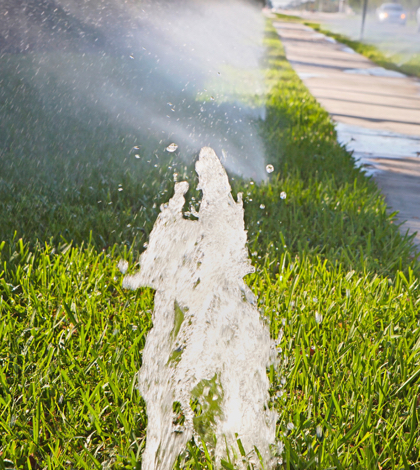The Board of Directors for the Coachella Valley Water District (CVWD) will lift its drought penalties, as of June 1, and will thereby cease to charge penalty fees for those who fail to meet conservation targets.
Last year, the State Water Resources Control Board (SWRCB) ordered CVWD to reduce water use by 36 percent versus usage in 2013. Though the targeted percentage was later reduced to 32 percent, the district and its customers achieved just 25 percent between June 2015 and April 2016.
Of the district’s 108,000 customers some 25 percent have been assessed drought penalties each month for exceeding the targeted percentage. Based on individual water use – and water use by some homeowner associations – the penalty fees have varied widely.
Since 2009, CVWD’s rate structure has reflected different tiers designed to penalize those who use more water and reward those who conserve. Drought surcharges have been added to customers’ bills for exceeding the targeted conservation goals since last July.
However, CVWD General Manager Jim Barrett strongly encourages customers to continue their conservation habits. “We expect everyone to continue to be mindful of the water use and understand that water-smart behavior is now part of being a Californian,” Barrett said. “Even without the state mandate, conservation has always been an important tool in the long-term plan to eliminated overdraft of the Coachella Valley’s aquifer.”
CVWD’s own Water Management Plan, a blueprint for long-term sustainability that was first adopted in 2002, calls for a 20 percent reduction in water use by 2020. The Urban Water Management Plan, mandated by the state to be updated this summer, maintains the call for a 20 percent reduction by 2020.
Changing to a supply-based approach makes more sense in an area like the Coachella Valley that has a strong water supply that isn’t tied to users outside the region. The CVWD Board also updated its water-use restrictions and extended them through January, in conjunction with the State Water Board’s recent actions. CVWD will continue to enforce these rules and is required to report enforcement efforts to the state each month.
“Eliminating overdraft of the aquifer is the most critical goal for our community and if we can do that with a variety of programs and projects that don’t require 36% or 32% conservation then we should have the flexibility to do that,” Barrett said.
Restrictions throughout the district include:
- No irrigation during or within 48 hours after measurable rainfall.
- Broken sprinklers must be repaired within 24 hours of notification.
- Eating establishments may only serve drinking water upon request.
- Hotels and motels must provide guests with the option of choosing not to have towels and linens laundered daily.
- Applying water to outdoor landscapes in a manner that causes runoff to adjacent property, roadways, parking lots, etc. is prohibited.
- Using a hose to wash an automobile, windows, solar panels, and tennis courts, except where the hose is equipped with a shut-off nozzle, is prohibited.
- Applying any water to any hard surface including, but not limited to, driveways, sidewalks, and asphalt is prohibited.
- Homeowners’ associations or community service organizations cannot block, stifle, or threaten homeowners from reducing or eliminating the watering of vegetation or lawns during a declared drought emergency.
“We know customers have learned to use water more wisely and some have taken permanent steps to reduce water use. I expect that customers will maintain a 20% reduction, even with no mandatory reduction in place,” Barrett said.
 California Water News Daily Your Source For Water News in California
California Water News Daily Your Source For Water News in California


